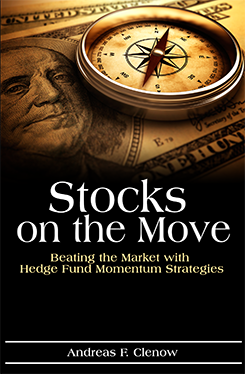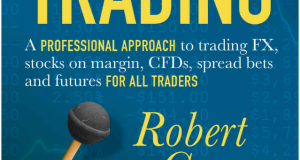Most people trade stocks because it seems easy. We all know what companies do and how they stock work. At least, that’s what most people would think. It’s a dangerous and deceptive illusion.
Equities seem attractive for two reasons. First because they appear simple, and second because of the common belief that stocks always appreciate over time. Both of these points are fallacies.
Most people trade companies that they understand. You go to Starbucks for your morning coffee and understand how their business works. You like your new neat iPhone and buy Apple stocks. This is of course an illusion. Your experience with Starbucks coffee or Apple iPhones is not really helpful for predicting future stock prices. It only seems like it, after the fact.
This is an illusion that it’s very easy to be fooled by. When you look at the names of publicly traded companies and associate your own experiences with them, it’s easy to get influenced by this. If you like their products, you feel that the share price should rightfully move up. If you think that they’re outdated, out of fashion or have a flawed product, you feel that the price should be falling soon. Most likely, these ideas are not helpful in trading the stock in question.
It’s very easy to look back at a larger price move and think that it was so obvious that this should have happened. Perhaps you look at the dramatic rise in the Microsoft prices in the 90’s and say that it’s so obvious that they would have dominated not only the software business but the whole stock market and possibly the world.
As clear as this seems now, it was not at the time. Worldcom seemed like a good idea. Global crossing seemed great. AoL was burning up. Now, everyone just remembers the winners. After the fact, it seems so clear. We all know why the price moved and why there was no other possibility.
A very similar illusion is the belief that you have an advantage in trading the stock of the company you work for. It would seem to most people as if their inside knowledge of the company helps them understand the market and achieve an edge in trading.
The bad news is that unless you’re part of the top management or the board, your knowledge about your company is worth exactly nada for trading the stock. Even if you’re at the top of the food chain, it’s doubtful if your insights are worth much, apart from just before major events. Those situations are of course spectacularly illegal to trade on.
I would even argue that buying shares in a company that you work for is irrational. Your knowledge of the company isn’t in any way helpful. You don’t know anything that analysts don’t. And you already have a risk exposure to the company. If they do poorly, you might get fired. If they do great, you might get a bonus. Why compound your risk to an unknown factor by buying the stock?
What about the other point? Do stocks always go up in the long run?
Sure they do. By about 5% per year. During this, they have massive drawdowns now and then of over 50% and you’ll spend years trying to recover it.
The stock markets have always gone up in the long run, but it’s a tiny return over time for a very substantial risk.
But what about Apple? They gained, right?
You’ll always find these examples. It’s the equivalent of buying a lottery ticket because you say a guy on TV who just won a million bucks. Putting all of your money in Apple in 1980 and holding it to today isn’t a strategy. It’s day dreaming.
But surely a mutual fund would take care of long term gains?
Of course they will take care of it. Oh, you meant as in, giving you long term gains? No, not so much.
The SPIVA reports always make for fun reading. These are the scorecards for mutual funds. Remember that mutual funds have one single task. To outperform a specified index. That’s it.
On any given three year period, around 80-90% of all mutual funds fail to perform that task.
The equity markets may show a yearly average gain of around 5%, but if you invest in mutual funds you will with devastating probability realize a much lower number.
Ok, now I’m all depressed. What should I do?
Apart from buying my book? Oh, come on, I had to do that.
Don’t worry, there are solutions. One is to become really, really good at analyzing companies. Most people going down that route are full time stock analysts. It’s a perfectly valid approach and there are some really good people in that game. The major drawbacks is that you need to focus on a small number of stocks. You can’t be an expert on everything.
The other approach is to apply systematic computer models to construct portfolios for you. There’s more than one way to do this of course. But since I just wrote a book about equity momentum, that’s what I’m sticking with.
From now on, I’ll be posting a lot more about stocks. And yes, I will post more about actual solutions and not just listing problems as I did with this article.
 Following the Trend
Following the Trend










I was an electrical engineering student in the early 1980’s and my very first stock purchase was Apple Computer. Four stock splits later and I still own it. My tiny 3 figure investment is now well into 5 figures and still going. I will give it to my kids someday. I bought it because of my engineering background but I have to admit that holding onto it for all these years was luck and laziness. If I would have analyzed every up and down I’m sure I would have sold it years ago. The initial investment was so small that I basically forgot about it for years. I had no strategy.
Around the same time I bought the stock I also bought an Apple II+ computer complete with external floppy drives (yes, I still have the computer as well). I did a calculation and determined that if I had taken the money I used to buy the computer and bought the stock instead, I could be retired by now.
So, my first trade was my best trade and I’m looking forward to reading your new book as my stock trades since then have not fared quite as well 😉
Well done on Apple, Brian! It must have been a little nervous a few times during that ride, but it sure paid off.
Well, at least I had the foresight to qualify my sarcasm with ‘putting ALL your money in Apple’. 🙂
Back in the 80’s I was on the Commodore 64. Their company didn’t fair as well…
This is a nice article debunking some common myths. I’m curious where did you get the 5% annual average increase in stocks…I thought that number was more like 10-11% . Or is it inflation adjusted and only takes into account the 21st century ? http://www.moneychimp.com/features/market_cagr.htm
It all depends on how you want to measure it. In the past 15-20 years, the real number is more like 5-6%. Count the dot com bull market of the 90s and you get a higher number. Start at the end of that bull phase and you get a lower number.
Measuring back to when Ulysses S. Grant was president, like that website, is just silly.
“Most people trade companies that they understand. You go to Starbucks for your morning coffee and understand how their business works. You like your new neat iPhone and buy Apple stocks. This is of course an illusion.”
When originally published, I bought/read Peter Lynch’s One Up on Wall Street… do you mean to tell us you can’t duplicate his results at Magellan by looking in the grocery store and noticing L’eggs displays and staying at La Quinta hotels? Dang… why did you take this long to tell us?
(Full disclosure: I bought/read Stocks on the Move also…Guybrush Threepwood said it was the better book)
I am curious, though, of your opinion of an article “Leverage for the Long Run – the 2016 Dow Award Winner”
I can’t upload a link here, but if you’ll send me an email I’ll respond…